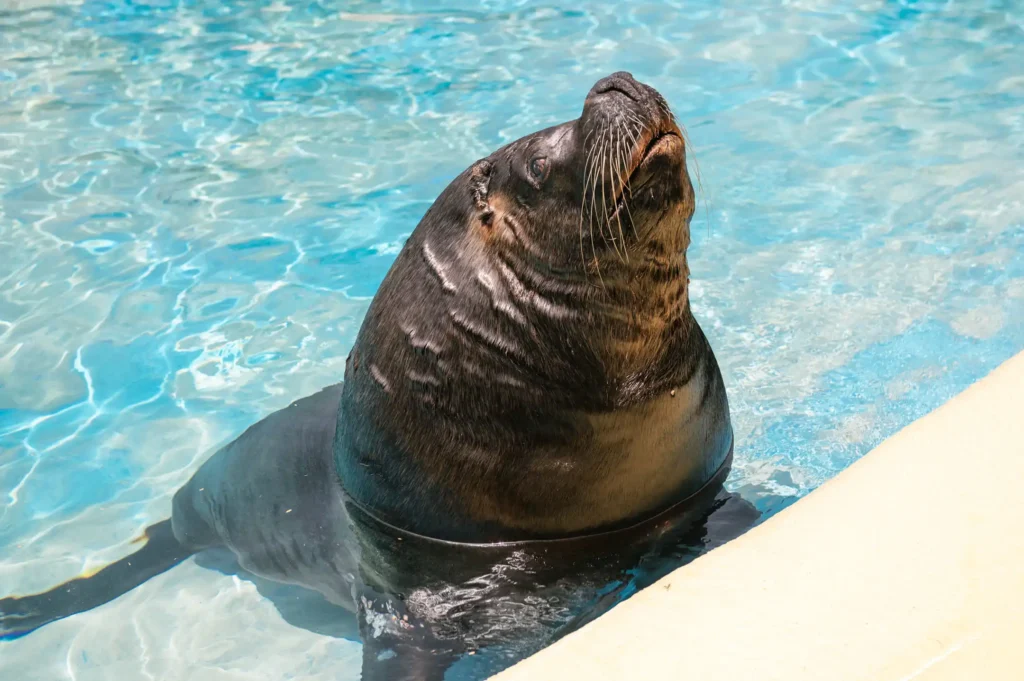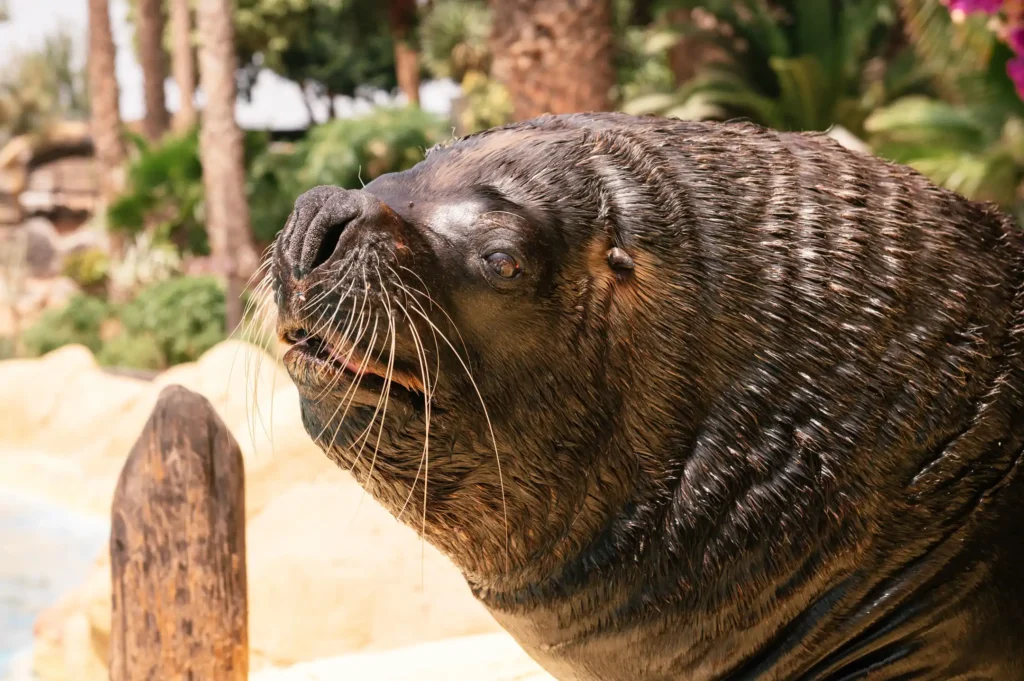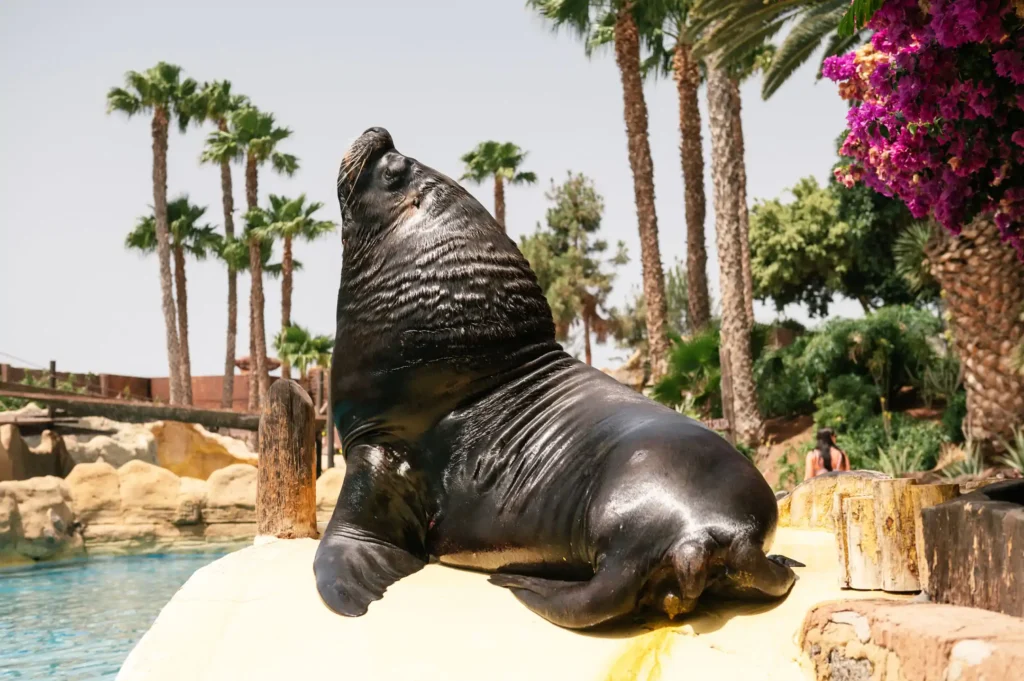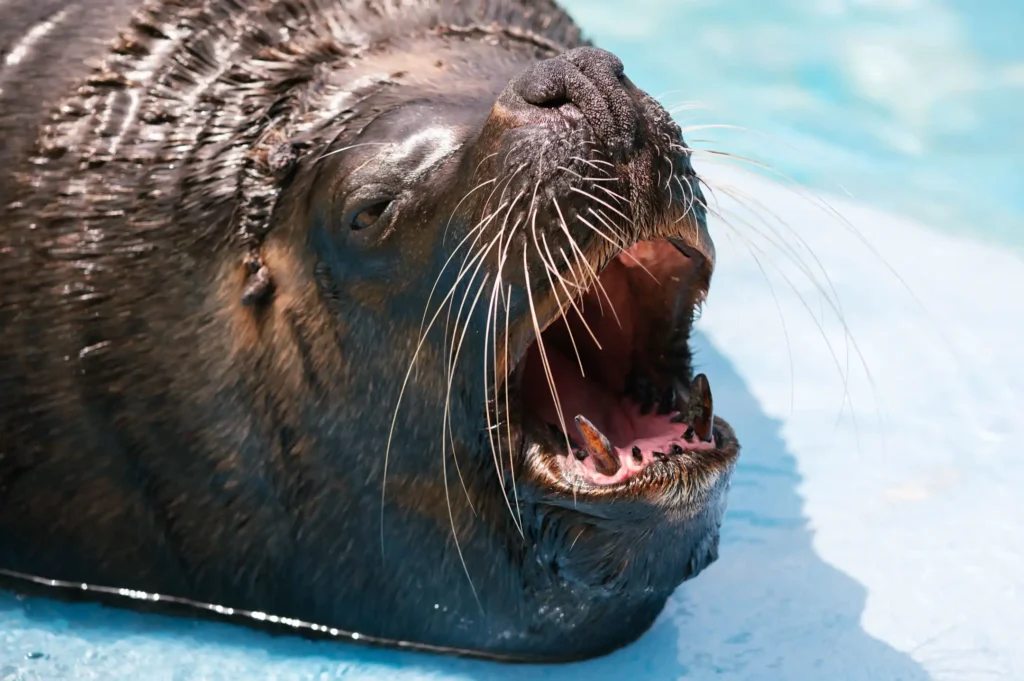This is the most abundant marine mammal in the Argentine marine coast and, due to its size, it is also the most impressive.
Physical features
The name of sea lion comes from their similarity to the quadruped of that name, particularly because of the mane of hair around the neck and chest of males. These animals have small ears, a short snout and a large, robust head.
Males can reach weights of 350 kg and near 3 m length, while females barely reach 150kg and 2.2m.
Males have a yellow and dark brown coloured fur, which is why they are named flavescens, from Latin flavus which means yellowish.
Habitat
They are native to the coast of Argentina, Chile, Peru and some parts of the south of Brazil, in the Atlantic coast of South America and the Falkland Islands in the Pacific Ocean.
They usually breed in the most southern areas to later move to the north in winter and spring, following the cold and nutrient-rich water currents of the Falkland Islands.
Outside the breeding season, males disperse to areas as far as some remote islands of the Pacific.
Diet
Depending on their geographic distribution, these animals adapt their diet to the availability and ease of hunting their prey. For instance, at the northern coast of Chile, they feed from cephalopods and slow fish living on the sea bottom. However, in Argentina, they attack faster prey such as anchovies and hake, as well as some invertebrates.
Nursing females use the advantage of the night to feed not very far from the coast, so they can quickly return to their pups.
Reproduction
They breed from December to January, during the austral summer. During such period, males adopt different strategies depending on the habitat they live in.
If they gather on rocky beaches of islands next to the continent, such as the Ballestas, in Peru and Lobos in Uruguay, they defend small territories where females group to refresh themselves and males guard them until females are ready to mate.
When they live in large and wide beaches, they gather on the shores to mate with females coming in and out of water to feed or refresh themselves.
Males do not feed and they hardly sleep during the reproductive period, defending their territory and their females from other males.
Gestation period lasts almost one year and they give birth to only one pup. Mothers protect and feed their pups for a minimum of six months and sometimes as much as two years.
Status and conservation
This species was hunted for trading purposes between 1930 and 1980 and population was dramatically reduced. After prohibition of hunting, their population has increased except for in the Falkland Islands where the population keeps descending despite their protection, which is most likely caused by the development of the fishing industry.
Currently, there is an estimated population of around 225,000 individuals and they are ranked as of Least Concern by the IUCN.





